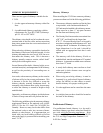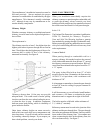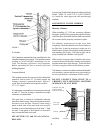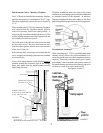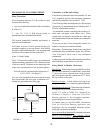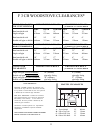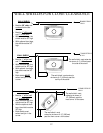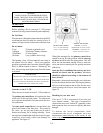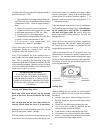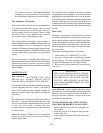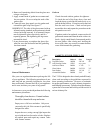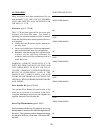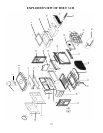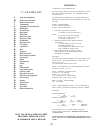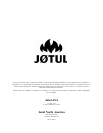
Starting and Maintaining a Fire
Burn only solid wood directly on the bottom
grate of the stove, do not elevate the fire in any
way.
The ash pan door on the stove must always be
securely closed when the stove is in operation.
Burning the stove with the ashpan open will over-fire
the stove and cause interior damage.
With the primary air control lever and the start-up air
control lever in the full open position (far right), start
NEVER OVERFIRE THE STOVE.
IF ANY PART OF THE STOVE OR CHIMNEY
GLOWS, YOU ARE OVERFIRING, AND A HOUSE
FIRE OR SERIOUS DAMAGE TO THE STOVE OR
CHIMNEY COULD RESULT. IMMEDIATELY CLOSE
DOWN THE AIR CONTROL IF YOU NOTICE THIS
CONDITION.
FIGURE 16
Complete the following steps for the proper break-in
procedure for the F 3 CB:
1. Light a small fire, newspaper and kindling only,
only allow the stove to reach a maximum surface
temperature of 200°. Burn for approximately 1
hour.
2. Allow stove to cool to room temperature.
3. Light a second fire, allowing the stove to reach
a maximum temperature of 300° for 1 hour.
4. Cool the stove to room temperature.
5. Light a third fire and gradually allow the stove
to reach a surface temperature of 400°
6. Cool stove to room temperature. This
completes the break-in procedure.
Never allow the stove to exceed a 400° surface
temperature during any break-in fire with the
exception of the last break-in fire.
Note: IT IS NORMAL for a new painted stove to
emit an odor and even smoke during its first several
fires. This is caused by the seasoning of the high
temperature paint and will diminish with each fire and
will eventually disappear. Opening a window or door
to provide additional ventilation will reduce the odor
as this process takes its course.
stove top
thermometer
stove top
thermometer
15
with several sheets of crumbled newspaper placed
directly on the grate. On top of the newspaper, place
several pieces of small dry kindling (approx. 1 in
diameter) with two to three larger logs (approx. 3 to
5 in diameter) on top.
Light the fire and close the door, slowly building the
fire by adding larger and larger logs. Close the start-
up air contrlo lever after the fire is established
and new fuel lights easily. Be sure to follow the
break-in procedure before creating a fire that will
damage the stove.
Once the stove has reached a surface temperature
range of between 400° and 600°, adjust the primary
air control lever as necessary to generate the heat
output and burn time desired.
Jøtul recommends the use of a magnetic stove top
thermometer to monitor the surface temperature of
the stove. The optimum surface temperature range
for the most efficient burn is between 400° and 600°.
See figure 16 below for the optimum locations of a
stove-top thermometer.
Adding Fuel
When reloading the stove while it is still hot and a
bed of hot embers still exist, follow this reloading
procedure:
· Always wear gloves when tending to the stove.
· Push the air control lever to the full open position
(far right).
· Wait a few seconds before opening the door.
· Use a stove tool or poker to distribute the hot
embers equally around the firebox.
· Load the fuel, usually with smaller logs first.
· Close the door, be sure to latch the door tightly.
· Wait 5 10 minutes before adjusting the primary
air to the desired heat output setting.



